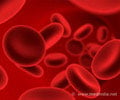While focusing on reducing the burden of common diseases, public health should also address the needs of people with blood disorders , experts say.

The authors contend that although most of the blood disorders discussed in the supplement are considered rare in the US and Western Europe—defined as affecting about 1 in 1,500 people—they should be ranked as a public health concern. "A public health framework is needed to address public health services and functions for all rare disorders, including blood disorders, regardless of the incidence or prevalence of a given disorder," they say.
The most common blood disorder, venous thromboembolism (VTE), consists of deep vein thrombosis and pulmonary embolism. It involves blood clots that occur in veins, usually in the legs, which can break up and move to the lungs and kill. VTE affects at least 1 million people in the US and is a major cause of death in adults, but "little is definitively known about the magnitude of [its] public health burden."
Hereditary hemochromatosis is a genetic disorder present in about 1 million Americans but "the opportunity to detect iron overload at an early stage and intervene … to prevent the development of clinical disease … remains a challenge," they add. And while at least 3 million Americans have sickle cell trait or are carriers of the sickle cell gene mutation, "the extent to which the carrier status poses health threats is not well established."
The supplement, comprised of 13 research papers and five workshop/meeting summaries, is authored by top medical educators and public health professionals. Its publication was supported by the CDC through a cooperative agreement with the Association for Prevention Teaching and Research.
Two papers focus on sickle cell trait screening policy in college athletes and military recruits, while seven address hemophilia and bleeding disorders, the most common of which are hemophilia A and B, and the hemoglobinopathies—sickle cell disease and thalassemia.
Advertisement
- Assess the prevalence/incidence of specific rare disorders;
- Monitor the health status and health-related quality of life of people with rare disorders and their families;
- Quantify the impacts of rare disorders on disability, mortality, and healthcare system use, particularly hospital-based care;
- Conduct research to identify preventable causes of health problems among people with rare disorders, including barriers to the consistent use of effective prophylaxis and treatment;
- Establish systems for early and continuous screening where appropriate;
- Educate and empower people with rare disorders along with their family members and primary care providers;
- Ensure access to cost-effective and affordable screening, diagnostic, primary care, and specialty health services;
- Evaluate the effectiveness, accessibility, and quality of health services for people with rare disorders and
- Inform program and policy decision makers about cost-effective strategies to improve health outcomes for people with rare outcomes.
Advertisement
Source-Eurekalert












